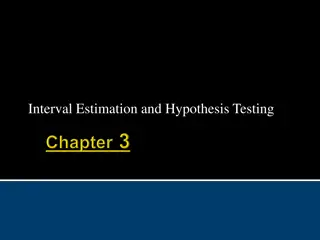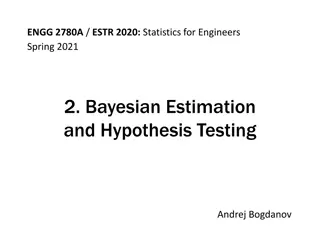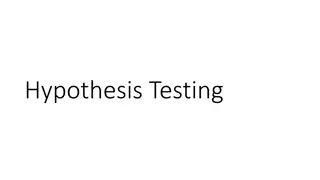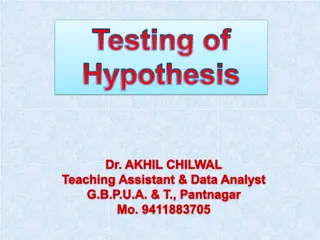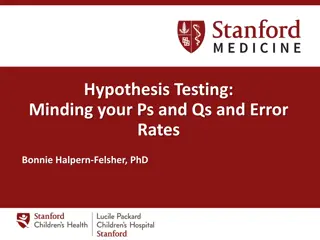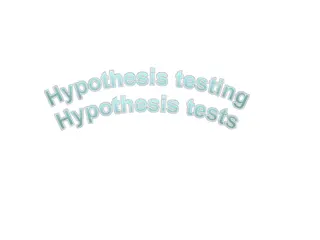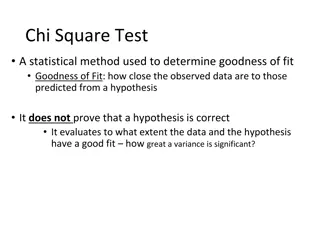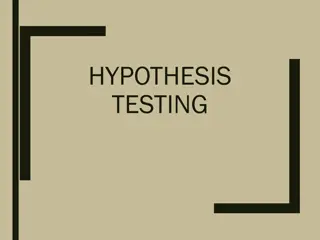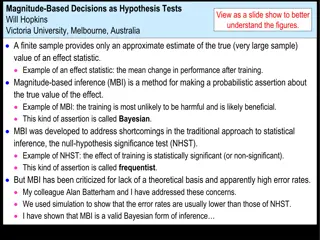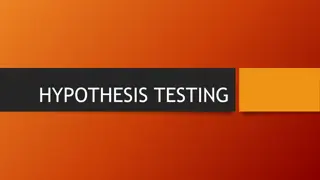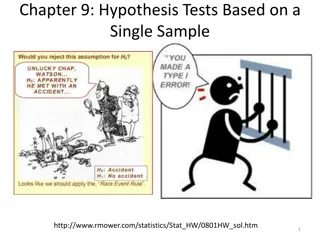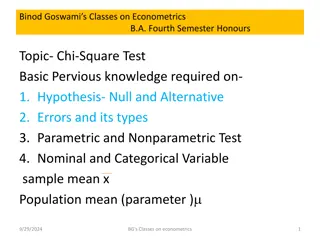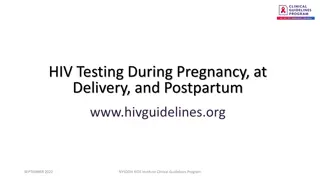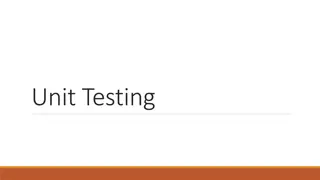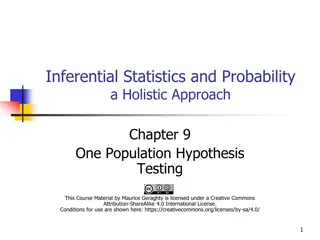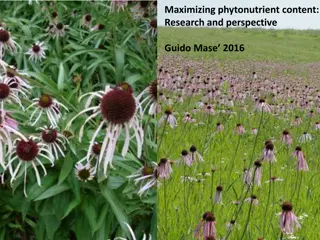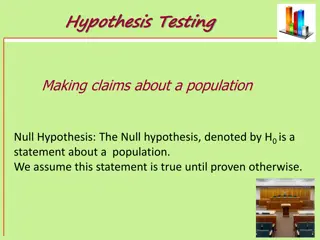Hypothesis Testing and P-Values
The concepts of hypothesis testing, P-values, making errors, and the power of hypothesis testing in statistical analysis. Learn about Type I and Type II errors, significance vs. importance, and how to interpret P-values to draw meaningful conclusions from data.
Download Presentation

Please find below an Image/Link to download the presentation.
The content on the website is provided AS IS for your information and personal use only. It may not be sold, licensed, or shared on other websites without obtaining consent from the author.If you encounter any issues during the download, it is possible that the publisher has removed the file from their server.
You are allowed to download the files provided on this website for personal or commercial use, subject to the condition that they are used lawfully. All files are the property of their respective owners.
The content on the website is provided AS IS for your information and personal use only. It may not be sold, licensed, or shared on other websites without obtaining consent from the author.
E N D
Presentation Transcript
READ: p. 461 - 463 "A trial as a Hypothesis Test" "P-Values" "What to do with an Innocent Defendent Ho: p = # (innocent) Ha: p > # (guilty) If we reject Ho, we have SUFFICIENT evidence for Ha If we do not reject Ho, we DO NOT have sufficient evidence for Ha. Does this mean Ho is true?
READ p. 483 "How to think about P-Values" Interpreting the P-Value: There is a P-Value% chance of getting a sample with p% successes or more extreme if the true percent is (Ho) .
p. 487 "Significant vs. Important" p-value = 0.04 when alpha = 0.05 ... significant?? p-value = 0.00001 when alpha = 0.05 ... significant?? p. 491 - 492 "Making Errors"
Type I Error = - REJECT Ho WHEN Ho IS TRUE - Conclude Ha is true, when Ho is really still true sentence: Conclude Ha, when really NOT Ha P(Type I Error) = ALPHA ( ) Type II Error = - FAILING TO REJECT Ho WHEN Ho IS FALSE - Concluding Ho is still true, when really Ha is true. sentence: Conclude NOT Ha, when really Ha. P(Type II Error) = BETA ( )
Power = - The probability of rejecting Ho when Ho is false - GOOD!! sentence: Probability of concluding Ha, and Ha is true. P(Power) = 1 - Calculating Power we won t do it! Power is considered adequate when: IT IS ABOVE 80% Increasing Power:2 things we can do to increase power are . 1) Increasen (sample size) 2) Increase alpha. This gives a larger chance to reject Ho.
Example 1: In Philadelphia it is believed that 12% of motorists run red lights. The city planners decide to put a few traffic cameras that will issue tickets to drivers that run red lights. After 2 months they check out a few corners where cameras had been installed. They found that out of 240 drivers that had the opportunity to run the red light 15 did so and were issued a ticket. Does this provide evidence of a decline in the percentage of drivers that run the red light? Use a level of significance of 5%. Assume conditions are met already.
1.What is a Type I error in this context? What is its probability? 2.What is a Type II error in this context? 3.Describe what Power means in this context.
4.If they had used a level of significance of 1% what would have happened to the Type I error, the Type II error, and the Power? 5. If they had increased the sample size to 500, what would have happened to the Type I error, the Type II error, and the Power?
Example 2: p. 502, #26 (a) one tailed. They are looking for an INCREASE in visibility. Ho: visibility is the same Ha: visibility is increased (b) Concluding the signs are more visible, when really they aren't more visible. (c) Concluding the signs are not more visible, when really they are more visible. (d) Probability of concluding that the signs are more visible, and they really are more visible. (e) original = 0.05 new = 0.01 alpha decreases => power decreasing (f) original n = 50 new n = 20 n decreases => power decreases
VOCAB: Statistically significant = When we reject the Ho (when p-value < alpha) Example: if = 0.05, which of the following p-values would be significant? 0.023 0.034 0.056 0.089 0.123
Confidence Intervals and Tests * Confidence Intervals are 2 sided * "Match" the confidence level and the when the Ha: * When doing a one sided test (Ha: > or <), double the to make it two sided, then match to conf. level. Ex: What confidence level is appropriate for = 0.03 with Ha: p < 0.10? Ex: What conf. level is appropriate for = 0.06 with Ha: p 0.40?
Ex: If I create a 95% confidence interval, and want to use it to test the following Hypotheses, what is the correct to use in my conclusion? (a) Ho: p = 0.62 Ha: p > 0.62 (b) Ho: p = 0.75 Ha: p 0.75 Ex: I create a 92% confidence interval. What is the correct for the following: (a) Ha: p < 0.81 (b) Ha: p 0.29
Example 4: p. 500, #9. Assume conditions met already. Just do B and C. (A)Interval = (0.01896, 0.04094)
(b) Ho: p = 0.05 Ha: p < 0.05 Since 0.05 is not in the interval, we do not believe that the value of 0.05 is true. The entire interval is below 0.05, so we can conclude that the % has decreased below 5%. We reject the claim at = 0.01 because the claim is not inside the 95% confidence interval. We have sufficient evidence that the true percent of American men who measure success primarily from their work is less than 5%. (c) We did a 98% confidence interval, so our level of significance for a one-sided test would be = 0.01.


